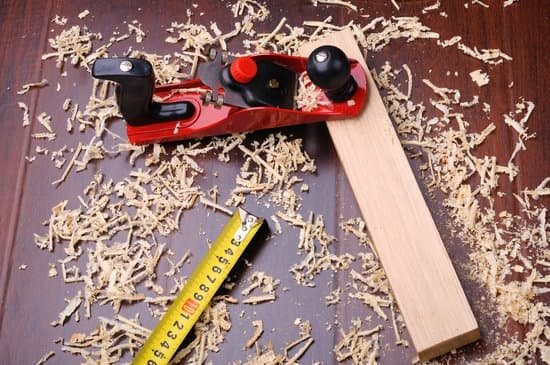A sash clamp, also known as a sash cramp, is an essential tool in the world of woodworking. It is a versatile and indispensable piece of equipment that has been used for centuries by woodworkers of all levels. In this article, we will explore the history, function, and various uses of sash clamps in woodworking projects.
Sash clamps have withstood the test of time and have evolved to meet the needs of modern woodworkers. Understanding the different parts of a sash clamp is crucial for utilizing its full potential in woodworking projects. Whether you are a beginner or a seasoned woodworker, learning how to use a sash clamp properly can greatly improve the quality and efficiency of your projects.
In this comprehensive guide, we will delve into the step-by-step process of using a sash clamp in woodworking, as well as provide tips and tricks for maximizing its effectiveness. Additionally, we will discuss common mistakes to avoid when using a sash clamp and compare it to other types of woodworking clamps to highlight its advantages and disadvantages.
So if you’ve ever wondered about what is a sash clamp used for in woodwork or how it can benefit your projects, read on to discover everything you need to know about this invaluable tool.
The History and Evolution of Sash Clamps
The sash clamp has a rich history in the world of woodworking, with its origins dating back to the 18th century. It was initially used in the production of windows and doors, hence its name “sash” clamp. Over time, the design and utility of sash clamps have evolved to become an indispensable tool in various woodworking projects.
One of the key developments in the evolution of sash clamps is the materials used in their construction. Traditionally, sash clamps were made from wood, but modern versions are often constructed from aluminum or steel, making them more durable and able to withstand greater pressure.
Another significant advancement in the history of sash clamps is their increased versatility. While they were initially designed for specific tasks such as assembling window frames, sash clamps are now widely used in numerous woodworking applications, including cabinet making, furniture construction, and general carpentry.
In recent years, there has been a resurgence of interest in traditional woodworking methods, leading to a renewed appreciation for the history and evolution of tools like the sash clamp. Woodworkers recognize that while technology has brought about many innovations, there is still tremendous value in understanding and utilizing classic tools that have stood the test of time.
| Key Development | Significance |
|---|---|
| Materials used | Shift from wood to aluminum/steel for durability |
| Versatility | Expanded use beyond window frames to cabinet making and furniture construction |
Understanding the Different Parts of a Sash Clamp
Sash clamps are essential tools in woodworking, used for holding pieces of wood together firmly during the gluing or assembly process. To effectively utilize a sash clamp in your woodworking projects, it’s crucial to understand the different parts that make up this versatile tool.
The main components of a sash clamp include:
- Head: The head of the sash clamp is where the pressure is applied to hold the workpieces together. It is usually made of cast iron and has a swiveling jaw that can be adjusted to accommodate different sizes of wood.
- Sliding Arm: The sliding arm of the sash clamp can be moved along the length of the bar to adjust for varying workpiece lengths. It also helps in applying even pressure across the entire surface of the workpieces.
- Bar: The bar is the long, straight metal or wooden piece that connects the head and sliding arm. It provides stability and strength to the clamp and determines how wide a piece can be accommodated.
Using a sash clamp involves understanding how these parts work together to create a secure grip on your woodworking materials. Proper knowledge of these components will ensure that you get optimal performance from your sash clamp in any woodworking project.
When using a sash clamp, it’s important to position the head and sliding arm correctly to achieve an even distribution of pressure across the entire surface of the workpiece. This ensures that your glued joints are sturdy and well-bonded. Furthermore, adjusting and tightening with proper positioning will prevent any damage or distortion to your wood pieces during clamping.
Overall, understanding each part of a sash clamp allows woodworkers to maximize its potential in various projects. Whether you’re working on large furniture pieces or smaller intricate designs, knowing how each component functions will help you achieve professional results in your woodworking endeavors.
Step-by-Step Guide on How to Use a Sash Clamp in Woodwork
A sash clamp is an essential tool in woodworking, particularly for holding and securing wood pieces in place during the gluing or assembly process. If you are new to woodworking or have recently acquired a sash clamp, it’s important to understand how to use it effectively. Follow this step-by-step guide on how to use a sash clamp in woodwork:
1. Positioning: Before using a sash clamp, ensure that your workbench is clean and free of any debris that may interfere with the clamping process. Place the wood pieces you need to join on the workbench and position them according to your project requirements.
2. Adjusting: Check that the sash clamp’s jaws are clean and free from any dirt or residue. Then, adjust the jaws by loosening the handle, positioning them around the wood pieces, and tightening the handle until they securely hold the pieces together.
3. Clamping: Once the jaws are properly adjusted, apply steady pressure on the handle to clamp the wood pieces together firmly. Be sure not to over-tighten as this can cause damage to the wood.
Remember that using a sash clamp requires precision and care, so take your time adjusting and clamping to achieve optimal results for your woodworking project.
Tips:
The Versatility of Sash Clamps in Various Woodworking Projects
Sash clamps are incredibly versatile tools that can be used in various woodworking projects. Their ability to provide strong, even pressure across a large surface area makes them indispensable in tasks such as gluing up panels, laminating, and assembling large wooden structures. Whether you are working on a small DIY project or a larger professional job, sash clamps can help ensure that your workpieces are held securely in place while glue dries or joints set.
One of the key uses of sash clamps is for gluing up panels. When working with multiple pieces of wood to create a larger panel, it is crucial to have even pressure applied across the entire surface to ensure a strong bond between the pieces.
Sash clamps excel at this task, thanks to their long reach and adjustable jaws, which allow them to accommodate different sizes of panels. This versatility makes them a go-to tool for woodworkers looking to create tabletops, doors, and other large flat surfaces.
In addition to panel glue-ups, sash clamps can also be used for laminating tasks. Whether you are creating curved laminations for furniture components or need to press veneer onto a substrate, sash clamps provide the necessary pressure and stability required for these processes.
Their adaptability and strength make them an essential tool for woodworkers looking to achieve professional results in their projects. The next time you find yourself wondering “what is a sash clamp used for in woodwork,” remember its versatility in various woodworking projects.
Tips and Tricks for Getting the Most Out of Your Sash Clamp
Sash clamps are versatile tools that can be incredibly useful in a variety of woodworking projects. To ensure that you get the most out of your sash clamp, there are a few tips and tricks to keep in mind.
First and foremost, it’s important to properly maintain your sash clamp to ensure its longevity and effectiveness. This includes regularly cleaning the clamp to remove any build-up of sawdust or other debris, as well as checking for any signs of wear and tear on the clamp’s components. Keeping your sash clamp in good condition will not only extend its lifespan but also ensure that it continues to perform at its best.
Another important tip for getting the most out of your sash clamp is to use it in conjunction with other clamps or support systems when working on larger or more complex projects. By combining multiple clamps, you can distribute pressure evenly across the workpiece and prevent any warping or misalignment during the gluing process. Additionally, using support blocks or wedges can help to stabilize the workpiece and provide additional pressure where needed.
Lastly, when using a sash clamp, it’s crucial to apply pressure gradually and evenly to avoid damaging the workpiece. Over-tightening the clamp can lead to bowing or twisting, while uneven pressure may result in an uneven glue bond. Taking the time to adjust and monitor the pressure applied by the sash clamp will contribute to a successful woodworking project.
By implementing these tips and tricks, woodworkers can make the most out of their sash clamps and achieve excellent results in their woodworking projects. Understanding how to properly maintain and use this tool will undoubtedly enhance overall efficiency and precision in woodworking tasks.
Common Mistakes to Avoid When Using a Sash Clamp
When using a sash clamp in woodworking, there are some common mistakes that beginners tend to make. Avoiding these mistakes will ensure that you get the best results and prevent any accidents or damage to your workpiece.
Incorrect Positioning
One of the most common mistakes when using a sash clamp is incorrect positioning. It’s important to position the clamp evenly on both sides of the workpiece to ensure that it is held securely in place. Failure to do so can result in an uneven or warped final product.
Over-Tightening
Another mistake to avoid is over-tightening the sash clamp. While it’s important for the clamp to hold the workpiece firmly, over-tightening can lead to damage to the wood, such as indentations or even breakage. It’s essential to find the right balance between holding the workpiece securely and not applying too much pressure.
Using Damaged Clamps
Using damaged or worn-out clamps is another mistake that should be avoided. Before using a sash clamp, always check for any signs of wear and tear, such as bent or rusted parts. Using damaged clamps can compromise the safety and effectiveness of your woodworking project.
By being mindful of these common mistakes, you can make sure that you are getting the most out of your sash clamp and creating high-quality woodwork without any issues.
Comparing Sash Clamps to Other Woodworking Clamps
Sash clamps are an essential tool in woodworking, but it’s important to understand how they compare to other woodworking clamps. Each type of clamp has its own advantages and disadvantages, and knowing the differences can help woodworkers choose the right tool for the job.
Advantages of Sash Clamps
One of the primary advantages of sash clamps is their size and strength. Sash clamps are typically larger and have a longer reach than many other types of clamps, making them ideal for holding together larger pieces of wood during assembly. Their sturdy construction also allows them to exert a great deal of pressure, ensuring a secure bond between two workpieces.
Another advantage of sash clamps is their versatility. They can be used for a wide range of woodworking tasks, from gluing up panels to securing large casework during construction. The adjustable nature of sash clamps also means they can accommodate various sizes and shapes of workpieces, making them a valuable tool in any woodworking shop.
Disadvantages of Sash Clamps
Despite their many advantages, sash clamps do have some limitations. One potential downside is their weight and bulkiness, which can make them more challenging to maneuver and store compared to other types of clamps. Additionally, because sash clamps require open space in front of the workpiece in order to tighten the screw mechanism, they may not be suitable for every woodworking situation.
Another drawback is the cost. Sash clamps tend to be more expensive than some other types of woodworking clamps, which may be a consideration for woodworkers on a budget. However, many craftsmen find that the versatility and durability of sash clamps more than justify the investment.
By understanding the specific advantages and disadvantages associated with sash clamping hardware in comparison to other types, woodworkers can make informed decisions about which tools will best suit their individual needs for various projects.
Conclusion
In conclusion, a sash clamp is an essential tool in any woodworker’s toolkit due to its versatility, history, and ease of use. Throughout the years, sash clamps have proven to be indispensable in various woodworking projects, from simple furniture making to complex joinery work. Understanding the different parts of a sash clamp and following a step-by-step guide on how to use it can help woodworkers achieve precise and sturdy clamping results.
The history and evolution of sash clamps have contributed to their reliability and effectiveness in woodworking. As one of the oldest types of clamps, they have stood the test of time and are still widely used today.
Woodworkers can benefit from incorporating this traditional tool into their modern projects for added stability and strength. Additionally, by being aware of common mistakes to avoid when using a sash clamp and learning tips and tricks for maximizing its potential, woodworkers can ensure successful outcomes in their woodworking endeavors.
Furthermore, when comparing sash clamps to other woodworking clamps, it becomes evident that they offer unique advantages such as extended reach and high pressure capabilities. However, like any tool, they also come with disadvantages that woodworkers should consider before selecting the right clamp for their specific needs.
Despite the drawbacks, it is clear that the importance of a sash clamp in a woodworker’s toolkit cannot be overstated due to its ability to provide reliable and precise clamping in various woodworking applications.
Frequently Asked Questions
What Is the Use of Sash Clamp?
The sash clamp is used in woodworking to hold large pieces of wood together while the glue dries. Its long reach and strong clamping force make it ideal for securing doors, panels, and furniture components during assembly.
What Is a Sash in Woodworking?
In woodworking, a sash refers to a frame with vertical and horizontal bars that hold the glass in a window or door. When it comes to sash windows, they are typically made up of several small panes of glass held together by wooden bars or muntins.
What Is a Clamp Used for in Woodwork?
Clamps are essential tools in woodwork as they are used to hold pieces of wood firmly together during gluing, nailing, or screwing processes. They come in various types such as bar clamps, spring clamps, C-clamps, and pipe clamps, each serving different purposes in woodworking projects.

Hi everyone! I’m a woodworker and blogger, and this is my woodworking blog. In my blog, I share tips and tricks for woodworkers of all skill levels, as well as project ideas that you can try yourself.





